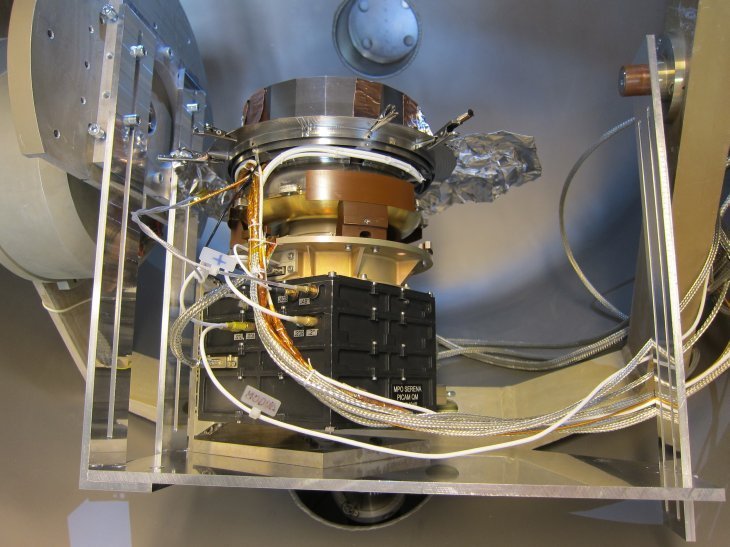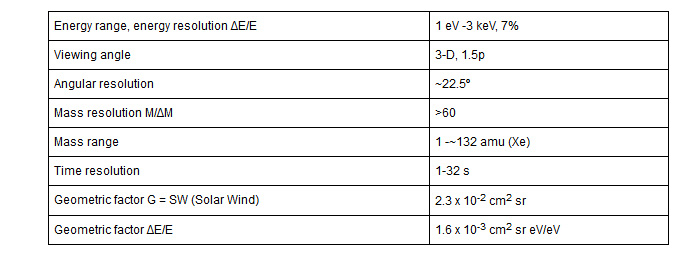PICAM (Planetary Ion CAMera)
PICAM (Planetary Ion CAMera) is an ion mass spectrometer operating as an all-sky camera for charged particles to study the chain of processes by which neutrals are ejected from the soil, ionised and transported through the environment of Mercury. The ion optics is based on the principle of a modified pin-hole camera. The sensor is axi-symmetric along the Z axis and its field of view is a hemisphere centred along this axis. Ions enter through an annular slit on a conical surface. After being reflected by a planar mirror, particles pass through a narrow, ring-shaped exit and enter TOF and imaging section. The mass analysis section consists of a deflection gate, a plane mirror, a classical retarding potential analyser (RPA), and the detector. The voltage applied to the second reflecting mirror determines the upper energy threshold while the voltage applied to the retarding grid of the RPA determines the lower energy threshold. The detector provides the "stop" time for TOF measurements and is also used as an imaging detector which determines the position of the ion impact.

PICAM Flight Model
Figure above shows a general layout of the sensor. The ion optics is based on the principle of a modified pinhole camera. The sensor is symmetric along the Z-axis and its FOV is a hemisphere centered along this axis. Ions enter through an annular slit (figure). After reflection on an ellipsoidal ion mirror (2) the 90° polar angle distribution is folded into a 15° angular range. Here the ions pass a modulated wire gate which defines discrete packets of ions for analysis of the time-of-flight until the particles impact on the MCP. The modulation can be either single-shot or with a pseudo-random sequence which results in higher efficiency. Particles pass through a narrow, toroidal analyzer and through an exit slit and are reflected by a planar mirror. After energy selection in the toroidal analyzer, they enter the TOF and imaging section. A cross section of the ion optics is shown in the figure. UV rejection will be obtained by a striated primary mirror covered by a non-reflecting layer of Cu2S, which decreases the UV reflection by a factor of 1000. Multiple reflections within the instrument, the small entrance slit and the narrow exit slit in front of the mass analyzer provide very strong protection. The outer part of the ion optics is designed for hot conditions. The lower part of the sensor containing the MCPs and the detector electronics is thermally decoupled.

Performance parameters of PICAM
PICAM has a higher mass resolution than
MIPA, which is optimised for measuring lower fluxes of exo-ionosphere. It has a 2π FOV, and can detect ions from the spacecraft potential up to ~3 keV. It can scan through different ion masses up to 123. PICAM is able to operate with a single-pulse or Hadamard coded, which collects more statistically sound data, but uses more power.
The main science objectives of PICAM are the following:
- Exo-ionosphere composition and distribution
- Planetary response to SW variations
- Magnetosphere structure and dynamics



